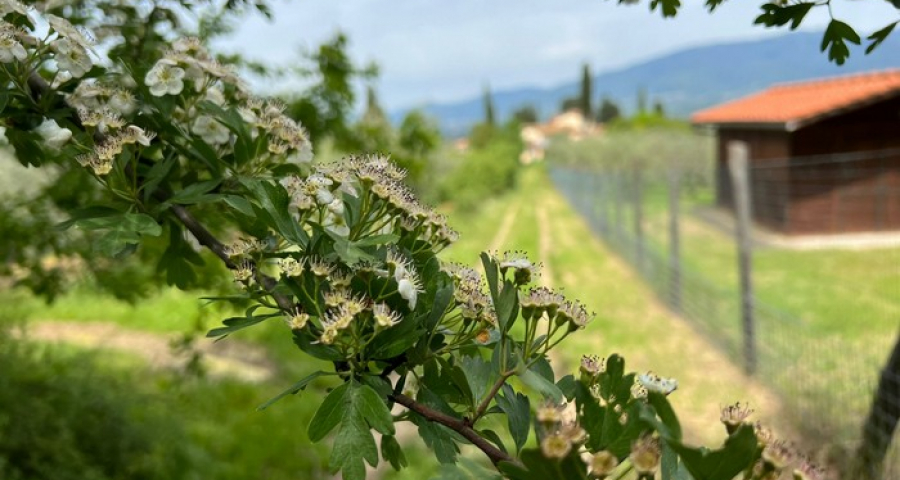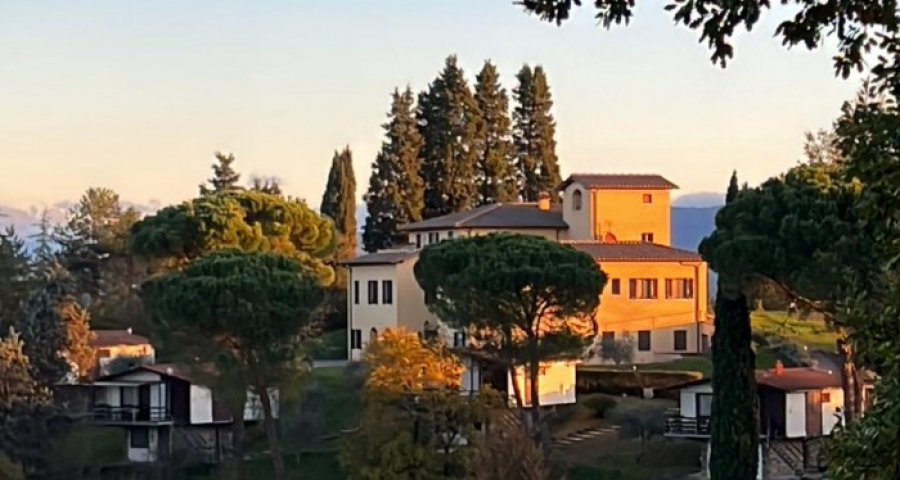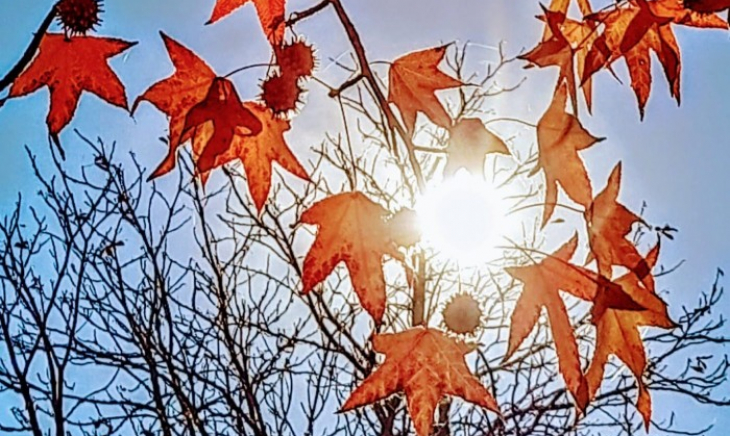Horizons - In his second novel-apologist, botanist Mancuso gives science and ecology a narrative guise; in an imaginary alternate world, plants talk and make community. While humans are harmful beings.
by Luigino Bruni
published in Agorà di Avvenire on 31/12/2024
The great climate crisis of our time would need a narrative shift and the activation of more positive emotions and happy passions. If the only dimension involved is the rational one, and the only passions activated by the crisis are fear, anxiety and guilt, it is very difficult for us to succeed in the titanic feat of reversing course in individual and collective lifestyles. The “you can't,” “it's wrong,” and “shame” are insufficient to achieve a radical change in culture. Stefano Mancuso, in the early part of his career as a scientist and botanist, worked with the scientific method, thus with observations, hypotheses, data, experiments, and tried to argue with the primary tool of science: reason. He devoted decades to acquainting us with the diverse intelligence of plants, their mysterious life, their choices, their essential and unknown function for the balance of the planet.
He has done this so well that he has also become a scientific influencer, one of the best known in Italy and outside. He has spent and is spending his time supporting major global warming mitigation campaigns. More recently to his scientific language he has added two novels-apologues with trees as protagonists, where, as in the great fairy tale tradition, by talking about trees he talks about us, our present and especially our future. The Version of Trees (Einaudi, pages 192, euros 17.00) is his second novel-The Tribe of Trees (2022) his first. A strong narrative turn, and a necessary one, because to truly change lifestyles the logos is necessary, but not sufficient: you also need the mythos. This has always been the case, when societies have generated major cultural revolutions, art, literature, and novels have been essential-from the advent of Christianity in Europe, which added folk legends and lives of saints to the Gospels, to the Unification of Italy in the second half of the 19th century, when Pinocchio and the Heart Book “made the Italians.” One does not change without activating all dimensions of life, including narrative capital, toward change.
The novel is about a society of trees, Edrevia, “founded on sharing,” where trees communicate and move. It is a society divided into community-clans, with a name and a history. Among them, trees are called “fellows,” and humans are called “the harmful beings.” The first and somewhat unique law of Edrevia is cooperation. Edrevia is certainly the plant kingdom, but in some ways it is also a metaphor for planet earth.
The story begins with three trees, Laurin, Lisette and Pine, who, after having made an exceptional journey, fail to communicate with the entire community, a communication that took place mainly through the connection of the roots: “All along, thanks to this community mechanism, we could benefit from every single experience recorded by each member of the tribe.” The three companions, having returned from the long and great journey never attempted by anyone in the history of that society, the story of which is the plot of the novel, are no longer able to connect, as if a “dark veil” that has fallen over the community prevents them from doing so: “We are faced with a phenomenon of which there is no trace in the history of Edrevia. Our community is based on the possibility of sharing. There is no community without sharing.” In the book, the just-quoted talk of Pine is interspersed with “ehmm” and ellipses: it is one of Mancuso's many stylistic inventions, including fantastic names of trees and places and several idiomatic expressions (such as “touching with branch”). Edrevia was experiencing a serious climate crisis caused by a global imbalance that had generated the abnormal rise in temperatures and extreme events, among them a very serious fire: “There had been so many catastrophes that had struck Edrevia in the last centuries due to the long neglected climate imbalance,” and the blame was “the continuous increase in the emission of gases produced by the activities of harmful beings.” The three trees decided to make the journey to seek a “new land for Edrevia, should further climate change or excessive warming forever prevent the rebalancing of our clans.” And because they understood that “it was not at all true, as we had been taught and had always believed, that we were the architects of our future. Not by a long shot: our future depended largely on the incomprehensible habits and dark actions of those on the outside.” The solution to their problem lay not inside, but outside their community.
Edrevia convenes an assembly, for which, perhaps, Mancuso was inspired by the biblical one mentioned in the Book ofJudges, where trees walk and talk, as in Edrevia: “They set forth the trees...” (Judges 9:8-15). During the assembly, Laurin, Lisetta and Pino tell the whole community, and us readers, about their journey. Encountering new lands and new trees, generally welcoming and good, with whom they manage to communicate-the most difficult communication is with the community of trees they will eventually meet, the I-69, trees all the same, lined up, all the same age (12 years old), which was the most shocking discovery for them (and for us). They discover three secret library-labyrinths, whose accurate and creative descriptions occupy many pages of the book. In the land of the Blur they meet Visela, a tree speaking a unique idiom resembling Venetian, who will join the three for the rest of the journey. There were no books in the Macchia, and the inhabitants had an extraordinary ability to tell and listen to one another. Listening to each other was “a central part of the day.” It seemed to Visela that “the ability to tell was disappearing from our community” of Edrevia, and he wanted to introduce it. At one point they arrive at an extremely rocky and inhospitable place. There they meet a Guardian (Black), who reveals to them the existence of the three libraries, all secretly connected to Edrevia, which contained “our most important treasure: the seed from which to start again.” The six guardians are tasked with multiplying “to try to delay the appearance of the effects of warming as much as possible by reabsorbing as many gases as possible from the atmosphere. All we have to do is grow and multiply.” Those familiar with Mancuso's proposals understand this chapter well.
The most interesting encounter of the four travelers is with the Phytonids, the inhabitants of Phytonides, founded by Phyton, the father of trees. It is a happy society, in harmony, in perfect balance. But the four friends are struck by an anomalous fact: in Phytonides no one measures temperature, there are no historical data collections, “Sorry,” replied Osyris, a local inhabitant, “but do you really care about the temperatures of a few centuries ago? They thus discover that in Phytonides, happy country, there is no science. Or rather, they realize soon after that there used to be science, but then something new happened: “We haven't had scientists for a long time. They were of no use and there were so many of them, they became more and more annoying. They were crazy and presumptuous. They said that the prosperity and health of us comrades depended on what they had done for us, and at some point they got it into their heads that they were better than Fiton himself: they wanted to save the world. And they wanted us to be the ones to change it for them by going around multiplying around the planet!” The four ask: How did it turn out? “They left. All of them, overnight.” Therein lies, perhaps, the center of Stephen Mancuso's myth-telling. Osyris adds, “If you want to kick someone out, you don't have to do it directly. You can make it so difficult for them to live together that leaving may be the least painful solution.” Actually, the reader will see, the disappearance of the scientists had been more complex. But the fact of their escape remains. First they had contributed decisively to creating the perfect happiness of Phytonides, but then that same community rejected them, to the point of forcing them all to run away. It is not difficult here to grasp a disquiet, perhaps a prophecy, of the scientist Mancuso, and a denunciation of a very troubling disease in our society: the growing distrust of scientific culture and the scientific method, especially in environmental matters (and after Covid also in health matters). Faced with the seriousness of the environmental crisis, which scientists have been honestly announcing to us for years, the easiest response is to deny the legitimacy of those who denounce, and thus to shelter their snouts and brains under the sand of foolishness. Denialism and delegitimization of serious scientists are already real diseases of our confused age.
Finally, hidden among the many trees in the book, Mancuso gives us a beautiful prayer, which reveals something of the scientist's soul: “Phyton, Lord of the Fringes, you who saw our forests born and heard the song of the first roots, bless the foliage the soil that shelters us, let our leaves grow lush and our fruit be abundant and sweet. Thou, Father Gurra, who hast created us with the Scrub and Valdora in the likeness of thy First Home, and Edrevia, guide our roots to the depths of the earth, make our shade shelter for companions, our leaves a haven of peace. Let our fruits give life, and for comrades, for strength and serenity you have offered us: thank you.










